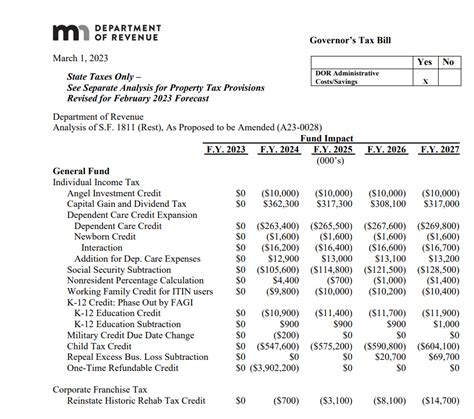Understanding the Minnesota Renters Rebate: What You Need to Know for 2023
The Minnesota Renters Rebate program is designed to provide financial relief to low- and moderate-income renters across the state. It helps eligible renters with their property taxes by providing a rebate based on the rent they’ve paid and their income level. As we move through 2023, understanding the key components of this program can be advantageous for tenants looking to alleviate some of their housing costs.
Eligibility Criteria
To qualify for the Minnesota Renters Rebate, applicants must meet specific criteria:
- Residency: Applicants must have been Minnesota residents for at least half of the year in which they are applying.
- Income Limits: For 2023, applicants must have an income under certain thresholds. Typically, the income limits are adjusted annually, so checking the Minnesota Department of Revenue website for the latest figures is vital.
- Lease Agreement: Renters should have a lease or rental agreement that reflects their rental payments.
- Rent Payment: The amount of rent paid during the year is also a crucial factor in determining the rebate amount.
How the Program Works
The rebate is calculated based on the amount of rent deemed taxable, which includes basic services such as heating, hot water, and other essential utilities. However, utilities that are not included in the rent may not qualify for consideration in the calculation. Here’s a breakdown of how the calculation typically works:
- Determine the total rent paid for the year.
- Subtract the amount that you have paid for separately billed utilities (if applicable) to arrive at the net rent.
- Consider the income limits set by the Minnesota Department of Revenue to determine the percentage of the rental cost that will be used to calculate the rebate.
Application Process
The application process for the Minnesota Renters Rebate is straightforward, although it requires essential documentation:
- Form Filing: Applicants need to fill out Form M1R, the Minnesota Renters Rebate application form. This form can be found on the Minnesota Department of Revenue website.
- Documentation: Gather necessary documents such as your lease agreement, proof of payment, and any other financial information required.
- Deadline: Applications must typically be submitted by August 15th of the following year for the tax year. However, it’s best to check the specific dates each year.
Rebate Amounts
The rebate amounts can vary based on several factors, including income, the amount of rent paid, and family size. Generally, renters may receive a rebate that ranges from a few hundred to a few thousand dollars. The specific rebate amount is calculated based on a formula that considers all the aforementioned aspects.
Tax Implications
It’s important to understand that while the Renters Rebate is not considered taxable income at the federal level, it may have implications on state tax scenarios. It is advisable to consult with a tax professional or accountant to gain clarity on how the rebate may affect your overall tax situation, especially if you have other sources of income or tax liabilities in Minnesota.
Common Myths
As with many government programs, there are misconceptions about the Minnesota Renters Rebate. Here are some of the common myths:
- It’s only for low-income renters: While it’s true that low- to moderate-income renters are the primary beneficiaries, those with slightly higher incomes may still qualify.
- It takes a long time to get your rebate: Most applicants receive their rebates within 8-12 weeks after submitting their application, assuming there are no issues with the paperwork.
- All forms of rental payments qualify: Not all payments may be eligible for the rebate calculation, especially if they include rent for non-taxable services.
Conclusion
The Minnesota Renters Rebate program can be a significant financial resource for eligible renters in the state. With the right information and resources, renters can navigate the application process more effectively and take full advantage of the benefits offered. If you believe you might qualify, starting your application early and ensuring you have the requisite documentation can simplify the process significantly. Always refer to the Minnesota Department of Revenue for the most up-to-date information regarding income limits and rebate calculations.
FAQs
1. How do I know if I qualify for the Minnesota Renters Rebate?
Eligibility is based on your residency status, income level, and the amount of rent you paid. Check the official guidelines provided by the Minnesota Department of Revenue for specific income thresholds.
2. When can I apply for the renters rebate?
Applications are typically accepted from January 1st to August 15th of the year following the tax year you are applying for. Make sure to submit your application by the deadline.
3. How will I receive my rebate?
The rebate is usually issued either via direct deposit to your bank account or through a check sent to your mailing address. Ensure that the Minnesota Department of Revenue has your correct banking information if you choose direct deposit.
4. What should I do if my application is denied?
If your application is denied, you will receive a notification explaining the reason. You can address any issues or appeal the decision based on the guidelines provided in the notice.
5. Can I get assistance with the application process?
Yes, various local organizations and community groups offer assistance with filling out the application. Additionally, you can contact the Minnesota Department of Revenue for specific inquiries.
Download Renters Rebate Mn Status
